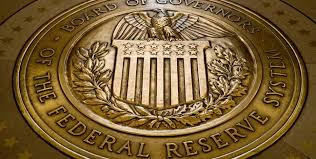
The Federal Reserve took action in financial markets for a second day on 9/18/2019 in another attempt to keep interest rates from moving higher. It marked the first time the central bank has taken such steps since the global financial crisis 10 years ago. And if you are trying to figure out what was going on when that happened. Think back to 2007 and 2008. Yeah.
This from 2007:
The US Federal Reserve injected $38 billion dollars into the economy via temporary open market operations this Friday. This is the largest number of temporary repurchase agreements (specifically, one business day repos) entered into by the Fed since September 11, 2001. Back in 2001, Fed purchases of treasuries exceeded $30 billion for the four consecutive days after the collapse of the World Trade Towers, total temporary injections into the banking system amounting to a whopping $295 billion.
Back to 9/18/2019
The New York Federal Reserve said on Wednesday that it would inject $75 billion into the market through another overnight repurchase agreement, or repo, aimed at keeping the federal funds rate within its target range of 2% to 2.25%.
Cash available to banks for their short-term funding needs all but dried up on Monday and Tuesday, and interest rates in U.S. money markets shot up to as high as 10% for some overnight loans, more than four times the Fed’s rate.
The exact cause of the turmoil is unclear, but market participants believe a confluence of events conspired to cause the crunch. One, corporations withdrew funds from money market accounts to cover quarterly tax bills, and on the same day banks and investors who had purchased $78 billion in weekly U.S. Treasury notes had to settle those trades.
Another contributing factor is that the Fed’s efforts to shrink its portfolio means bank reserves parked at the central bank overnight, which can be made available to other banks if needed, are at their lowest level since 2011. This factor in causing the liquidity crisis is probably the most troubling in that it goes to the heart of the idea that the Federal Reserve may not know what the hell it is doing. Or worse, they may know exactly what they are doing, and they are experimenting on how they can temporarily tank the economy at election time to help get a Totalitarian (anti-constitutional) Democrat elected to office to the benefit of Red China and the certain US Oligarchs who owe a large part of their fortunes to business deals with Red China.
Even as the FED had to deal with a liquidity crisis, which may or may not portend something greater happening in the economy, the FED announced that it is cutting interest rates by another quarter point. The action was approved on a 7-3 vote, with two officials wanting to keep rates unchanged and one arguing for a bigger half-point cut. It was the largest number of Fed dissents in three years.